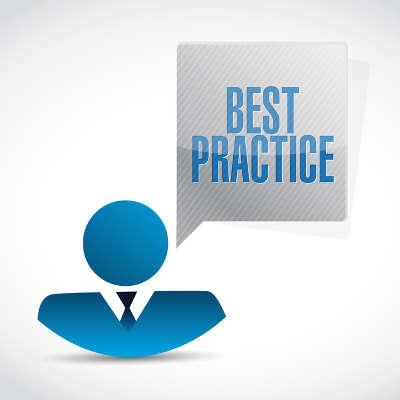What Every SMB Should Know When Selecting an IT Service Provider

Identifying a qualified managed service provider can be challenging–especially if you don’t know what to look for. You should be able to gauge the worth of an IT provider based on a couple of key qualifications, just like you would if you were selecting an employee. What are some of the primary features that you want to look for in a managed service provider?
Industry Experience
For any employee or organization that you deal with, you’ll want to hire only those who have some sort of industry experience that they can call upon. In this case, you’ll want your MSP to have some sort of information technology background so that they know how best to handle your business’s technology solutions. There will always be experience and knowledge that only comes from hands-on experience, so be sure that your prospective IT talent has some to spare.
Quicker Response Times
Have you ever dealt with an IT provider or a technician who doesn’t know the definition of acceptable response time? You always want your technicians to acknowledge when work needs to be done and to complete it within a reasonable timeframe. Time-wasting IT resources don’t provide much value for your organization, and the same can be said for your employees. It might sound cliche, but time is money, and you want the resources at your fingertips who can best manage it.
Scope of Service
You should consider how well-rounded your managed service provider is. What kind of services do they offer for your organization? You’ll find that a managed service provider that’s good for multiple solutions is much more efficient and useful than one who specializes in only one topic. You need to find your business an MSP that can handle a wide range of subjects ranging from network security to disaster recovery, and everything in between.
On-Site Services
Most issues can be resolved without an on-site visit, but you should still insist on a hands-on approach from time to time for more intensive tasks. Your MSP should be willing to make the trip to the office to ensure that they can do their job properly. After all, it’s difficult to get any hands-on work done while not in the office–especially if it’s diagnosing a particular hardware issue that needs an on-site visit to address.
Does your business need help with technology management and maintenance? Reach out to Catalyst Technology Group at (317) 705-0333, your local and reliable managed service provider.
Project Management: What You Need to Know

Every business has IT projects they want to complete. Whether it is a small change like introducing a public cloud platform, or a large one like migrating all your data from four servers onto one, you have to expect situations will arise that will make you want to pull your hair out. To overcome the challenges that come with any major IT project, consider these four points.
Understand What You Need
By understanding exactly what your company stands to gain from any new IT project, and being able to properly strategize to meet those ends, you can really help mitigate the rate of failure of said project. Some questions you should ask before getting started include:
- What is the best result from undertaking the project?
- What are the project’s potential benefits?
- Will this project affect the ability for multiple departments to continue operations as normal?
- Will the project affect your relationships with clients/prospects?
- How much, if any, downtime will the project cause?
- Does your staff need to be informed about the status of the project?
Planning for Delays
There are a litany of potential issues that can cause delays to a project. Typically, during the duration of a project something that wasn’t in the game plan will happen and will set the implementation timeline back. To guarantee that your project isn’t going to cause headaches for more people than it has to, anticipating that there will be a hiccup or two along the way is a solid practice. Providing your implementation team some time to iron out the kinks can go a long way toward having a solution that is implemented properly and ready to be utilized. And, if for some reason no problems arise, you will actually come in under budget, which is great for every business.
Measuring Progress and Hitting Benchmarks
If you are taking on a large IT project, gauging the success of it can sometimes be difficult. By breaking up the project and setting up very clear benchmarks, the overall implementation will benefit. Since there are a lot of facets to every IT project, including budget, timeline, and the unforeseen inefficiencies that we talked about above, setting up a system to best understand where you are with a project is a must. The use of key performance indicators (KPIs) can substantially improve your overall understanding of the project. Catalyst Technology Group uses some of the following metrics when performing our IT projects:
- Actual cost
- Cost Variance
- Earned Value
- Planned Value
- Return on Investment
Communication
Of the four points in this blog, this is the one that is most neglected. Typically, it is the job of the project manager to, well, manage the project. To that end some managers don’t find it necessary for their resources to know the full scale of the project as they are traditionally only performing specific tasks. In our experience, to best drive a project home, and to get the best work out of your technicians, it is important that they are emotionally engaged with the success (or failure) of the entire project. Moreover, if the project has an effect on multiple facets of your business, communication is essential to ensure you aren’t hit with profit-killing downtime in moments when it is not completely expected.
There are many pieces of software currently on the market to help project managers run efficient projects. They have integrated options to ensure that communication is maintained and benchmarks are hit. These programs can make sure your team is keeping forward momentum, as it is essential to a project’s success.
Like most situations, an IT project will have unforeseen issues. To keep these issues from become problems that can cost your organization dearly, consider reaching out to the IT professionals at Catalyst Technology Group. Our technicians understand just how much technology means to the modern business and can help consult you on how to get what you need done right. To learn more, call us today at (317) 705-0333.
Tip of the Week: Know Exactly How Far It Is from Point A To Point B With Google Maps

Who needs a GPS device when you have all that you need, right in your pocket? We’re talking, of course, about your smartphone. Whether you have an Android device or an iPhone, Google Maps can make for a great alternative, and it sure beats trying to use an atlas. You can use Google Maps to chart the distance between any target destinations and your current location. You can even use it to get the total distance for an upcoming vacation.
Before you get started, take a moment to make sure that you have the latest version of your Google Maps app for multiple platforms, including iOS or Android. You can find it on the Play store or iTunes.
You can start by opening the Google Maps app and navigating to the place you want to measure distance to. All you do is drop a pin on the location by tapping it. You can then proceed to expand the menu at the bottom of the screen and tap Measure distance. The location will appear in a set of crosshairs on the map.
The next step is to add another point near your location. You can just use whatever bend in the road is closest to your current location. The app will then calculate the distance between your points after you place each one. Once you’ve accomplished this, just select Measure Distance.
One notable thing to keep in mind is that the app can only tell you the distance between your desired location and your current location if you took a direct route there. It’s likely that there will be lots of complications if you drove your car there in a straight line. To tell the driving distance from one location to the next, you must place points all along the streets you’ll use to get to your location. This lets you calculate the exact distance you’ll be travelling.
If you like these tips and tricks, share these blogs on your social media accounts!
Tip of the Week: Know Exactly How Far It Is from Point A To Point B With Google Maps

Who needs a GPS device when you have all that you need, right in your pocket? We’re talking, of course, about your smartphone. Whether you have an Android device or an iPhone, Google Maps can make for a great alternative, and it sure beats trying to use an atlas. You can use Google Maps to chart the distance between any target destinations and your current location. You can even use it to get the total distance for an upcoming vacation.
Before you get started, take a moment to make sure that you have the latest version of your Google Maps app for multiple platforms, including iOS or Android. You can find it on the Play store or iTunes.
You can start by opening the Google Maps app and navigating to the place you want to measure distance to. All you do is drop a pin on the location by tapping it. You can then proceed to expand the menu at the bottom of the screen and tap Measure distance. The location will appear in a set of crosshairs on the map.
The next step is to add another point near your location. You can just use whatever bend in the road is closest to your current location. The app will then calculate the distance between your points after you place each one. Once you’ve accomplished this, just select Measure Distance.
One notable thing to keep in mind is that the app can only tell you the distance between your desired location and your current location if you took a direct route there. It’s likely that there will be lots of complications if you drove your car there in a straight line. To tell the driving distance from one location to the next, you must place points all along the streets you’ll use to get to your location. This lets you calculate the exact distance you’ll be travelling.
If you like these tips and tricks, share these blogs on your social media accounts!
Tip of the Week: IT Has A Lot Of Jargon… How Much Do You Know?

If you spend more than ten minutes with anyone from the technology industry, you may notice that they have a rather colorful vocabulary. It’s not too vulgar or anything, but it is chock-full of buzzwords that you may not fully understand. Here are some of the most frequently used words in the IT industry.
Actionable Analytics
Businesses are capable of harnessing the power of analytics like never before. However, it’s important to remember that only certain data will actually be useful. The data that can be used to improve operations and measure progress is called actionable analytics, and it’s likely some of the most important data you’ll acquire.
Artificial Intelligence
Suspend any knowledge of artificial intelligence that science-fiction movies like The Matrix or Terminator have introduced over the years, and consider instead what intelligent technology can do for your business. You can use it to process lots of data all at once, or make educated decisions using this data. Other types of machinery are capable of speech recognition, learning, planning, and even problem solving.
Blockchain
Blockchain technology is pretty complicated, but the basic idea of it is that each time a file is changed, the changes are recorded, encrypted, and stored in a change log that cannot be edited or changed in any way. Blockchain technology is used in most cryptocurrency transactions, but also has uses in electronic medical records and legal agreements.
Chatbots
Chatbots are commonly considered programs that can build upon conversation, whether it’s through a chat window or spoken over the phone. It’s basically a way to automate certain functions for your business, allowing individuals or groups to get the support they need, even if they don’t speak a specific language. Chatbots can use databases and natural language processing to translate sentences in one language to another.
Cloud-Based Services
Cloud computing has allowed organizations to offer their assets “as a service.” What this means is that services can be delegated to organizations in a scalable, affordable, cloud-based environment that defies the boundaries of traditional hardware and software infrastructures. Furthermore, the company offering the services is generally responsible for any maintenance or security the service requires, while providing the consumer with the ability to control user permissions. Let’s say you purchase virtual server space–you pay a monthly fee, which keeps you from purchasing an entirely new server unit. It’s a considerable cost savings, to say the least.
Datafication
Since businesses are digitizing so much data, it is now being analyzed to transform the way that it’s utilized. This is called datafication, which is the process of turning aspects of everyday life into data that can be used for various purposes. One example is using social media to understand just who your potential employees are. In this sense, social media can, to an extent, replace personality tests. In fact, analyzing data is often a more accurate gauge of character than a personality test.
Decentralized Cryptocurrency
Cryptocurrency is something that is often used on the dark web to make sketchy sales. On the other side of the coin, however, is the ability to send and receive private, encrypted transactions outside of traditional banking. Cryptocurrency is a virtual asset that doesn’t rely on a physical currency to function, so in a lot of ways, it’s useful. One example of a rather popular cryptocurrency is BitCoin.
Gamification
When they first entered the computing world, video games made a huge splash. Chances are that your younger workers grew up with video games in at least some capacity. You can use this to your advantage with gamification techniques designed to enhance productivity through making work fun–or, at the very least, offering goals or “experience points” for your team to meet. If they earn enough points, they can level up and earn a reward.
Machine Learning
Machine learning is an aspect of artificial intelligence that allows a computer to collect data from different sources, and transform that data into reliable predictions. Businesses might use this information to make educated decisions about their future. For example, a company could use machine learning to collect data from potential customers and use it to increase the possibility that the target would buy specific products or services.
Microservices
If you don’t want each and every service that an application or a program has to offer, there’s often the choice to invest in a microservice, which breaks each of these features down into bite-sized pieces. You can then pay for them individually so as not to purchase services that you don’t need, and they can easily be swapped out or changed as needed.
Open Source
Open-source programs are built off of public source code that can be modified to suit the general needs of the organization. It’s often free and available for any organization that wants to use it. Businesses that want to create custom-made applications can often use open-source code to build working applications with a negligible price margin.
For more information about the many, and often confusing, words in the IT technician’s vocabulary, reach out to Catalyst Technology Group at (317) 705-0333.
It’s Time to Write a Eulogy for the Internet as We Know It

The Internet is prone to change. We all know this and have experienced it firsthand. Even though we may understand this reality, it can still be rather shocking when we’re confronted with it. The latest statistics show us how the current changes of the Internet have huge implications about how we’ll all interact with the web moving forward, which may spell doom for doing “online business as usual.”
A recent report by Forrester reveals that we are spending 85 percent of our time on our mobile phones using apps, and only 15 percent in the browser. Pair this with another major trend that saw a tipping point in 2014 when more people began accessing the Internet through mobile apps than desktop computers, and you really begin to see clearly just how the web is truly changing.
By changing, we mean that people are spending far less time on their desktops (and dramatically more so on their mobile devices) perusing the Internet by going from website to website, and far more of their time online using mobile apps. Does this mean you, as a business owner, should therefore shift all of your online efforts to mobile apps?
Not necessarily, seeing as another finding from Forrester’s study shows that people are spending 85 percent of their time on their mobile device utilizing only five apps, which includes obvious apps such as Facebook and Google.
As net neutrality continues to be threatened by legislation influenced by special interests, the trend shown by these statistics threaten the same freedoms we enjoy online, only from a different angle. That angle: the business interests of a handful of companies that own these popular mobile platforms will end up dominating and controlling the online conversation. Business2Community describes it like this: “This reality on the commercial web is now being revealed as we are witnessing the rise of a duopoly. Google and Facebook. Today 90 percent of all advertising growth on digital is coming from these two companies.”
Now, don’t get us wrong, as long as there’s an Internet you’ll still be able to publish your message (whether it be personal or professional) in the same ways that were popular 10 years ago before the iPhone hit the scene (like using websites, forums, email, etc.). It’s just that, good luck getting anybody to actually listen to your message without the help of Facebook and Google to drive traffic to your site. Furthermore, online content that’s not tailored for mobile will continue to lose influence as the Internet continues to evolve in the ways that it is.
While the vast majority of us are powerless to stop such changes, all those who value the open Web have every right to mourn what the web’s becomining. An appropriate eulogy can be found in the words of Tim Berners-Lee’s (the inventor of the World Wide Web) 1995 utopian vision of how the Internet can change the world for good. Berners-Lee described his vision of the web as “an open platform that would allow everyone, everywhere to share information, access opportunities, and collaborate across geographic and cultural boundaries.”
While the web is more accessible and “open” today than ever before, one must put an asterisk at the end of this 1995 statement that communicates, “at the terms of Google and Facebook.”
From a business standpoint, the ongoing changes of the Internet presents a challenge that’s inherent with the use of any technology–the challenge to keep up with and anticipate trends, and to adapt your business model accordingly. Technology can change suddenly and you owe it to the continuity of your business to be in the know. Thankfully, you’ve got the technology experts at Catalyst Technology Group to navigate this changing world of technology for you.
Tip of the Week: 11 Security Best Practices Every User Should Know

You might spend a significant amount of time thinking about your business’s security practices, but the same can’t be said for your organization’s employees. Unless you give them a reason to care about security, they likely won’t. The resulting apathy could eventually become serious problems that could hinder operations in the long run, or worse, expose your business to threats that could put your employees and your clients in danger.
In order to keep these instances to a minimum, consult the following cheat sheet. This will give your employees a great way to follow critical best practices.
Essential Cybersecurity Considerations
- Use the company’s network to store files: Always store your organization’s data on an in-house network. This is because any files stored locally on your desktop might not get backed up. Do not use personal cloud accounts, like Google Drive or Dropbox, to save or share company-owned documents.
- Never leave your workstation unlocked and unattended: Always lock your computer using the Windows Key + L shortcut before stepping away from it, even if only for a moment.
- Don’t connect unknown devices to your work PC: This is especially important for small devices like USB drives. You never know what could be on them.
- Don’t download or install applications without approval: If you download an app without permission from IT or a network administrator, you could cause problems for other employees. Always ask for permission before downloading or installing software.
- Don’t respond to unsolicited or suspicious emails: If you receive a message that has an unknown or unfamiliar sender, it could contain malicious ransomware or other nasty threats. Be sure to notify IT immediately so that they can investigate the issue. Be especially cautious around unsolicited proposals or resumes.
- Don’t accept support from unexpected callers: If you receive a phone call from someone claiming to be from Microsoft support (or other well-known companies), just hang up. These callers are often fraudsters hoping to remote into your PC and access company information.
- Adhere to password best practices: Keep your passwords strong and complex at all times, and never use the same password more than once.
- Get approval for mobile devices from your manager: Don’t use your smartphone, tablet, or laptop for work purposes until you’ve been granted approval. This is to keep company data as secure as possible.
- If you see someone, tell someone: If you think that something is out of the ordinary, like an intruder in the workplace, be sure to alert management. Visitors should not be allowed to roam around the office unattended.
- Think twice before clicking: If you’ve received a link in any correspondence, you should avoid clicking on it until you’re sure it’s from a trusted source. Links can often be considered cyber threats, especially those that are in spam messages.
- Report issues as soon as they appear: If you experience something that seems troublesome, report the issue to management immediately. Proactive vigilance is the best way to prevent downtime, and it only serves to make your job easier.
Print this list out and hand it off to any employees who could use training on security best practices.
Keeping the business secure isn’t just your responsibility–everyone should be involved in the process. By following this list of best practices, you stand to protect your business against threats that could harm operations. To learn more about how to secure your business, including external technology solutions that prevent issues from transforming into major problems, reach out to us at (317) 705-0333.
Tip of the Week: Did You Know Microsoft Word Calculates Math Equations?

You know Microsoft Word as a word processor that lets your organization compose documents. Yet, you may not know the extent to which you can use this application. You might be surprised to hear this, but you can even perform mathematical calculations using Microsoft Word!
First, you’ll need to open up a new document in Word. This will be your playground throughout the duration of this blog article, so feel free to try out this process as we walk you through it.
Look in the All Commands tree for the Calculate command. You can find it in File by navigating through Options.
The next step is to use the Quick Access Toolbar to find All Commands. You want to add the Calculate command to the Quick Access Toolbar for easy access.
Once this has been done, you’ll be able to solve an equation that you’ve typed out. All you have to do is highlight it with your cursor.
To put this new mechanic to the test, just type something basic like =4+4 into the document. Once you’ve highlighted the equation with your cursor, click the Calculate command that’s now located in your Quick Access Toolbar. You’ll now see the result of the calculation at the bottom of the screen in the left-hand corner, where you would normally see the number of words in the document.
That’s about as simple as it gets. This lets you stay in your Microsoft Word document without exiting just to go to your calculator application. In fact, many other apps that you have will also have hidden features that let you do more than meets the eye. For example, Microsoft Excel can also perform a variety of mathematical functions within its spreadsheets. All of this cross-functionality is one of the main reasons why a productivity suite like Microsoft Office 365 is so helpful for SMBs.
What other hidden tricks found in Microsoft Word can you think of? Let us know in the comments, and be sure to subscribe to our blog for more great tips.

